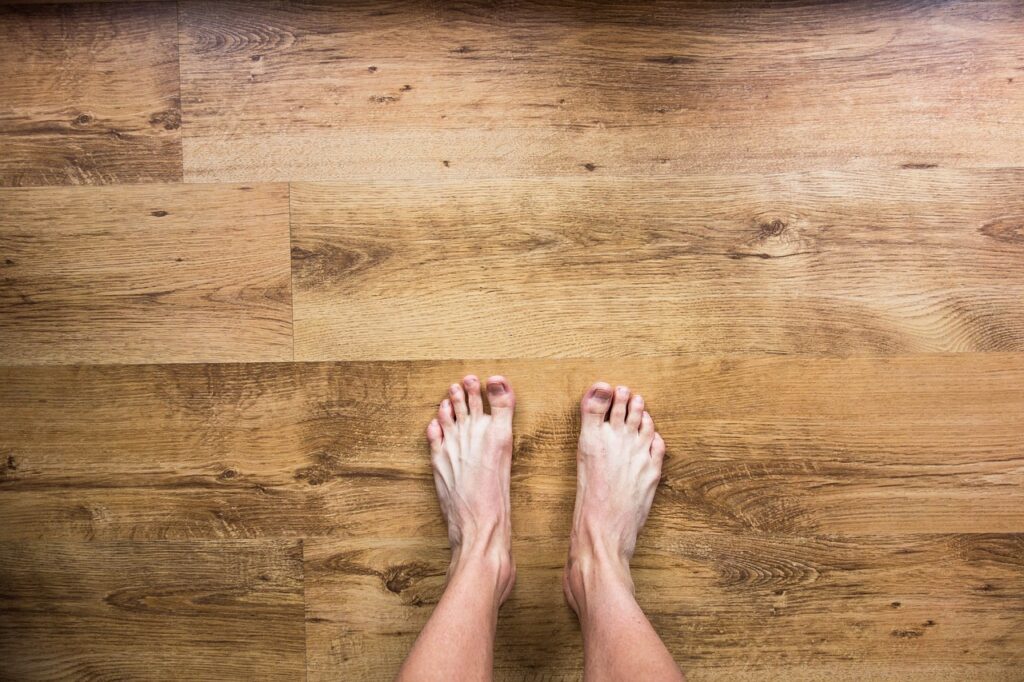A floor is more than just a surface. When you step on your home’s floor, you are actually stepping on a surface where your family’s life unfolds. That is why here in Lion Garages, we understand that your floor should be durable, safe, and reliable. That also includes your garage flooring.
Garage floors often take a backseat in home improvement discussions, yet they play a critical role in the overall safety, functionality, and longevity of the space. Many homeowners consider the garage a secondary area, using it for parking, storage, or DIY projects. But ignoring the quality of the flooring can lead to a cascade of problems. From health hazards to structural damage, poor garage flooring is not just an aesthetic issue; it can be a serious risk to you, your property, and your wallet.
Safety Hazards from Slippery or Damaged Floors
One of the most immediate dangers posed by subpar garage flooring is the risk of slips and falls. Uneven surfaces, cracks, or peeling finishes can become significant tripping hazards, particularly in wet or oily conditions. The garage is often exposed to moisture from car tires, rain, snow, or even routine cleaning activities. If the floor does not have the right coating or textured finish, it becomes an unpredictable and slippery surface. A small puddle that forms after a rainstorm or a slick patch of oil can turn into a major accident waiting to happen, making it imperative to address flooring issues before they escalate.
Improperly maintained floors can also gather loose debris such as gravel, small chunks of concrete, or detached coatings. These materials make footing unstable and pose additional risks to anyone using the garage. Homes with elderly individuals or small children are especially vulnerable, as these groups are more likely to lose balance and suffer serious injuries. The impact of a slip on a hard garage floor can range from minor scrapes to severe fractures, potentially leading to long recovery periods and high medical expenses. Taking preventative measures through better flooring is an investment in the health and safety of everyone using the space.
A single slip-and-fall accident can carry significant emotional and financial consequences. Families might find themselves grappling with hospital bills, physical therapy costs, and even legal liabilities if guests are injured on their property. Preventing these incidents starts with proper attention to the floor beneath your feet. Anti-slip coatings, leveling repairs, and regular maintenance create a safer environment, ensuring the garage remains a functional extension of the home instead of a hidden danger zone. Improving garage flooring is not just about aesthetics but about minimizing everyday risks.
Increased Vehicle Wear and Damage
A garage with a cracked or uneven floor can also negatively affect the condition of your vehicles. Driving over surface imperfections repeatedly stresses your tires, suspension, and alignment system. Over time, these small jolts and misalignments can cause significant mechanical problems, leading to costly repairs. A seemingly minor crack or bump can create an uneven surface that continuously wears down your tires, reducing their lifespan and increasing your maintenance expenses. Protecting your vehicle starts with ensuring a smooth, stable surface beneath it.
Floors with exposed elements like rebar, sharp rocks, or nails from deteriorated concrete present another danger. These hazards can easily puncture tires, causing blowouts or slow leaks that may not be immediately noticed. In addition, debris can get lodged in tire treads, further compromising vehicle performance and safety. If damage occurs while pulling into or out of the garage, it could also endanger passengers and lead to accidents on the road. Maintaining a clean, well-paved surface inside your garage is essential for preserving your vehicle’s condition and ensuring safe daily use.
Water pooling on poor flooring exacerbates these problems by inviting corrosion. Continuous moisture exposure under the vehicle can attack metal components, leading to rust on the undercarriage and chassis. Rust not only shortens a vehicle’s life but also impacts its resale value and structural safety. The expense of treating or replacing rusted parts far outweighs the cost of preventive measures like sealing the garage floor or repairing cracks. Addressing flooring issues promptly protects your investment and saves you from long-term financial burdens.
Structural Issues and Water Damage
Water infiltration is another serious issue linked to poor garage flooring. When cracks and holes form, they create pathways for water to seep into the foundation of the building. Over time, water intrusion can erode the concrete, weaken the foundation, and compromise the structural integrity of the garage and adjacent areas. This can lead to major repairs not just in the garage but throughout the home, making it crucial to address small issues before they expand into larger structural crises. Protecting your foundation starts with ensuring a watertight and stable surface.
Once water penetrates the flooring, it can travel to other parts of the house. Moisture seeping into basements, crawl spaces, or adjoining walls fosters the growth of mold and mildew. These fungi thrive in damp conditions and can pose serious health risks, particularly for individuals with allergies or respiratory problems. The presence of mold often requires professional remediation services, which are both expensive and disruptive. Ensuring that your garage floor is properly sealed and maintained acts as a first line of defense against these hidden dangers.
A poorly maintained garage floor also becomes an open invitation for pests. Small openings and moisture attract insects like ants, termites, and cockroaches, as well as rodents seeking shelter. Once inside the garage, pests can easily infiltrate the rest of your home, leading to widespread infestations that are difficult to eradicate. The cost of pest control, along with the potential damage to property and stored belongings, underscores the importance of proactive floor maintenance. Keeping your garage floor in top condition protects not just the building itself but the broader ecosystem of your home.
Fire Hazards and Chemical Exposure
Garages often serve as storage spaces for flammable materials like gasoline, oil, paint, and cleaning agents. A cracked or porous floor can absorb these substances, making it difficult to remove spills completely. These residues can become fire hazards, especially in the presence of electrical tools or heaters that may generate sparks.
Poorly maintained flooring also poses a risk of chemical exposure. When hazardous substances seep into the concrete, they can release toxic fumes that affect indoor air quality. This becomes a major concern in homes where the garage is attached to the main living area.
Reduced Home Value and Curb Appeal
Garage flooring might not be the first feature potential buyers notice, but it contributes significantly to a property’s overall value. A well-maintained, attractive garage floor can be a selling point, while cracked and stained concrete may give the impression of a poorly maintained home. It sends a message about the owner’s attention to detail and can influence the buyer’s perception of the entire property.
In competitive real estate markets, small upgrades can make a big difference. Investing in high-quality flooring can elevate your home’s appearance and appeal, offering a good return when it comes time to sell.
Limitations in Usability and Functionality
Poor garage flooring limits the space’s usability. Homeowners who want to use their garage as a workshop, gym, or extended living space will find it difficult to do so with an unsafe or unsightly floor. Heavy equipment cannot sit evenly on uneven surfaces. Poor insulation and sealing can make the space uncomfortable in extreme weather conditions.
A solid, well-installed floor opens up a world of possibilities. It allows you to reimagine your garage as more than a storage area. Whether you want to create a hobby station, a man cave, or simply an organized storage zone, it all starts with the foundation.
Cost Implications of Delayed Repairs
Delaying repairs to garage flooring may seem like a cost-saving decision, but in reality, it leads to higher expenses over time. Minor cracks become larger, structural damage escalates, and water or chemical damage spreads. What could have been a minor fix may turn into a full-scale replacement job.
Furthermore, the collateral damage caused to vehicles, stored belongings, or connected areas of the home increases repair and maintenance costs. Insurance claims may be denied if damage is deemed due to homeowner negligence, compounding financial stress.
Environmental and Energy Efficiency Concerns
Insufficient flooring can impact your garage’s energy efficiency. Gaps, cracks, and poor insulation allow drafts, making it harder to regulate the temperature. This results in increased energy consumption if you use heaters or air conditioning in the garage.
Additionally, floors that absorb and retain chemicals contribute to environmental contamination. Runoff from cleaning or rainwater can carry these substances into storm drains, affecting local water quality. Responsible homeownership includes considering how small features like garage flooring impact the environment.
Conclusion
Garage flooring is far more than a cosmetic concern. It is foundational to safety, property value, and functionality. Poor flooring compromises every use-case scenario a garage can offer, from parking and storage to hobbies and home projects. Understanding these risks underscores the need to prioritize quality flooring solutions.
Investing in a durable, well-installed garage floor can save money, protect your property, and enhance daily living. The ground beneath you should not be an afterthought. It is time to give your garage floor the attention it deserves.

